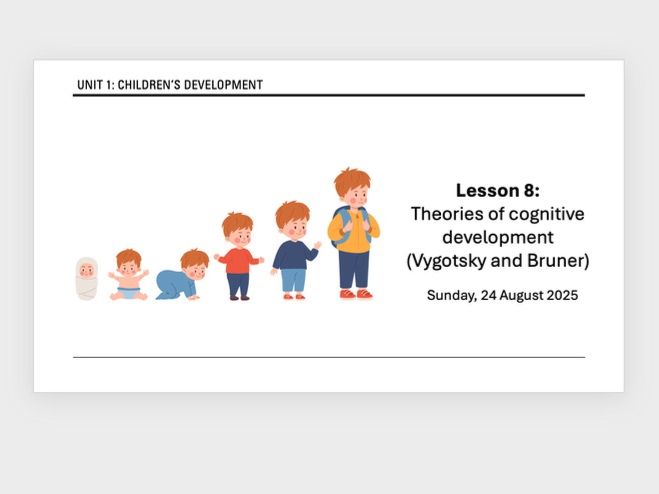



This lesson explores the influential theories of Lev Vygotsky and Jerome Bruner, focusing on how children’s learning and thinking develop through interaction and support. Learners will study Vygotsky’s concepts such as the Zone of Proximal Development (ZPD) and scaffolding, alongside Bruner’s ideas of spiral curriculum and the modes of representation. The lesson highlights how both theorists emphasise the importance of language, culture, and social interaction in learning.
The resource includes:
- Clear explanations of Vygotsky and Bruner’s key theories (C3.2/3)
- Activities to support understanding and application of theory
- Fully adaptable materials to suit the needs of your learners
Ideal for non-specialists, cover staff, or busy teachers, this lesson provides an accessible way to explore two of the most significant cognitive development theories in early childhood.
Something went wrong, please try again later.
This resource hasn't been reviewed yet
To ensure quality for our reviews, only customers who have purchased this resource can review it
to let us know if it violates our terms and conditions.
Our customer service team will review your report and will be in touch.